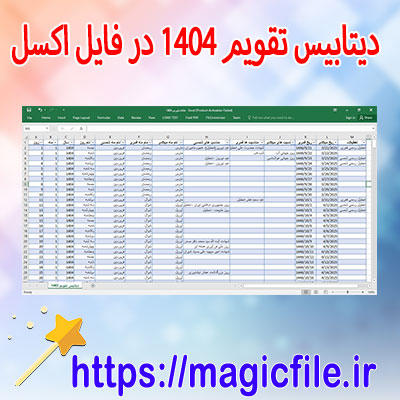مدیریت سیستمهای اطلاعاتی (Management Information System)
مدیریت سیستمهای اطلاعاتی، که به اختصار MIS نامیده میشود، به عنوان یک ابزار کلیدی در سازمانها و شرکتها بهکار میرود. این سیستمها بهمنظور جمعآوری، پردازش، ذخیرهسازی و توزیع اطلاعات بهکار میروند. این اطلاعات معمولاً به مدیران کمک میکند تا تصمیمات موثری بگیرند و عملکرد بهتری داشته باشند.
نقش و اهمیت MIS
بهطور کلی، MIS میتواند به عنوان پل ارتباطی بین دادهها و اطلاعات عمل کند. این ابزار میتواند به مدیران کمک کند تا روندهای تجاری را شناسایی کنند و به بهینهسازی فرآیندها بپردازند. به عبارت دیگر، MIS نه تنها اطلاعات را پردازش میکند، بلکه به تحلیل و تفسیر آنها نیز میپردازد.
اجزای اصلی سیستمهای اطلاعاتی
سیستمهای اطلاعاتی از چندین جزء اصلی تشکیل شدهاند، از جمله:
- سختافزار: شامل کامپیوترها، سرورها و تجهیزات شبکه.
- نرمافزار: شامل برنامههای کاربردی و سیستمعاملها.
- دادهها: اطلاعاتی که مورد پردازش قرار میگیرند و به تصمیمگیری کمک میکنند.
- فرآیندها: روشهایی که اطلاعات جمعآوری، پردازش و توزیع میشوند.
- افراد: کاربرانی که از این سیستمها بهرهبرداری میکنند.
کاربردهای MIS
سیستمهای اطلاعاتی در حوزههای مختلفی کاربرد دارند. در زیر به برخی از این کاربردها اشاره میشود:
- تحلیل عملکرد: مدیران میتوانند با استفاده از MIS عملکرد سازمان را تحلیل و بهبود دهند.
- پیشبینی: با دادههای تاریخی، MIS میتواند به پیشبینی روندهای آینده کمک کند.
- تصمیمگیری: مدیران با دسترسی به اطلاعات دقیق و بههنگام میتوانند تصمیمات بهتری بگیرند.
نتیجهگیری
در نهایت، سیستمهای اطلاعاتی مدیریت، به عنوان ابزاری حیاتی برای بهبود کارایی و کارآمدی سازمانها شناخته میشوند. این سیستمها با جمعآوری و تحلیل دادهها، به مدیران امکان میدهند تا در دنیای پیچیده و در حال تغییر کسبوکار، بهترین تصمیمات را اتخاذ کنند.
MANAGEMENT INFORMATION SYSTEM: A COMPREHENSIVE OVERVIEW
Management Information System (MIS) serves as the backbone of modern organizational decision-making. Fundamentally, it integrates people, technology, and processes to collect, process, store, and distribute vital information. This information empowers managers at every level to make effective, timely decisions.
The core purpose of MIS is to transform raw data into meaningful insights. It achieves this through systematic data gathering from various departments like finance, operations, marketing, and HR. Then, by employing advanced software tools, it processes these data sets into reports, dashboards, and analytics.
WHY MIS MATTERS
In today’s fast-paced business environment, the ability to respond swiftly to changes is crucial. MIS facilitates this agility by providing accurate, up-to-date information. For example, a sales manager can instantly see which products are underperforming and take corrective action. Moreover, MIS supports strategic planning by offering trend analysis and forecasting capabilities.
COMPONENTS OF MANAGEMENT INFORMATION SYSTEM
MIS typically consists of five components: hardware, software, data, procedures, and people. Hardware includes computers and networking devices. Software encompasses applications designed for data processing and reporting. Data is the raw material, while procedures define how data is collected and used. Lastly, people operate and manage the system, ensuring its effectiveness.
TYPES OF MIS
Various types of MIS exist to serve different managerial needs. Transaction Processing Systems (TPS) handle routine operations like billing. Decision Support Systems (DSS) assist in complex decision-making by analyzing large datasets. Executive Information Systems (EIS) focus on high-level summaries for senior executives.
CHALLENGES AND FUTURE TRENDS
Despite its benefits, MIS faces challenges such as data security, system integration issues, and resistance to change among employees. However, advancements like artificial intelligence, cloud computing, and big data analytics are revolutionizing MIS. These innovations promise more personalized, real-time insights and improved decision accuracy.
In conclusion, Management Information Systems are indispensable tools that drive organizational success by bridging the gap between data and decision-making. They foster efficiency, enhance communication, and support strategic initiatives, making them vital in the contemporary business landscape.





